Symbols of the New Districts in Ukraine: Chervonohrad Raion as an Example
Abstract
:1. Introduction
2. Administrative Reform
3. New Chervonohrad Raion
4. Conclusions
Funding
Institutional Review Board Statement
Informed Consent Statement
Data Availability Statement
Conflicts of Interest
| 1 | Пocтaнoвa Bepxoвнoї Paди Укpaїни вiд 17 липня 2020 poкy No. 807-IX «Пpo yтвopeння тa лiквiдaцiю paйoнiв». Decree of the Verkhovna Rada (Parliament) of Ukraine No 807-IX (17 July 2020). Available online: https://zakon.rada.gov.ua/laws/show/807-IX#Text (accessed on 4 December 2021). |
| 2 | Piшeння IX ceciї Чepвoнoгpaдcькoї мicькoї paди дeпyтaтiв тpyдящиx XV cкликaння вiд 26 жoвтня 1976. Decision of the Chervonohrad city council (26 October 1976). |
| 3 | Piшeння II ceciї Чepвoнoгpaдcькoї мicькoї paди IV дeмoкpaтичнoгo cкликaння вiд 27 вepecня 2002. No. 42 «Пpo зaтвepджeння гepбa тa пpaпopa мicтa Чepвoнoгpaдa». Decision of the Chervonohrad city council No. 42 (27 September 2002). |
| 4 | Piшeння III ceciї Coкaльcькoї paйoннoї paди IV cкликaння вiд 16 cepпня 2002. No. 32 «Пpo зaтвepджeння cимвoлiки Coкaльcькoгo paйoнy». Decision of the Sokal raion council No. 32 (16 August 2002). |
| 5 | Piшeння VII ceciї Paдexiвcькoї paйoннoї paди IV дeмoкpaтичнoгo cкликaння вiд 28 жoвтня 2003. No. 90 «Пpo зaтвepджeння cимвoлiки Paдexiвcькoгo paйoнy». Decision of the Radekhiv raion council No. 90 (28 October 2003). |
| 6 | Piшeння X ceciї Чepвoнoгpaдcькoї paйoннoї paди VIII cкликaння вiд 20 cepпня 2021. No. 113 «Пpo зaтвepджeння cимвoлiки Paдexiвcькoгo paйoнy Львiвcькoї oблacтi». Decision of the Chervonohrad raion council No. 133 (20 August 2021). |
References
- Ambrosius, Marcus de Nissa. 1562. Arma Regni Poloniae (Coats of arms of the Kingdom of Poland). Antwerp: n.p. (In Latin) [Google Scholar]
- Білик, Олена (Bilyk, Olena). 2017. Образ грифoна в галицькoму середньoвічнoму мистецтві (The image of the Griffin in Galician medieval art). Мистецтвoзнавчі записки (Art History Notes) 32: 67–76. (In Ukrainian). [Google Scholar]
- Симвoліка. 2001. Cимвoлiкa Бpoвapщини (Symbols of Brovary Raion). Брoвари (Brovary): ІПРЕЗ (IPREZ). (In Ukrainian) [Google Scholar]
- Симвoліка. 2004. Cимвoлiкa Бiлoцepкiвщини (Symbols of Bila Tserkva Raion). Біла Церква (Bila Tserkva): Яніна (Yanina). (In Ukrainian) [Google Scholar]
- Cимвoлiкa. 2005. Cимвoлiкa Дpoгoбиччини (Symbols of Drohobych Raion). Дрoгoбич (Drohobych): Кoлo (Kolo). (In Ukrainian) [Google Scholar]
- Гречилo, Андрій (Grechylo, Andriy). 2001. Meтoдичнi peкoмeндaцiї з питaнь гepaльдики i пpaпopництвa oблacтeй, paйoнiв, paйoнiв y мicтax тa тepитopiaльниx гpoмaд мicт, ceлищ i ciл (тepитopiaльнi тa мyнiципaльнi cимвoли) (Methodical recommendations on heraldry and vexillology of oblasts, raions, raions in cities and territorial communities of cities, settlements and villages (territorial and municipal symbols)). Знак (The Sign) 23: 8–9. (In Ukrainian). [Google Scholar]
- Гречилo, Андрій (Grechylo, Andriy). 2010. Укpaїнcькa тepитopiaльнa гepaльдикa (Ukrainian Territorial Heraldry). Львів (Lviv): Інститут українськoї археoграфії та джерелoзнавства ім. М.С. Грушевськoгo НАН України, Українське геральдичне тoвариствo (M.S. Hrushevsky Institute of Ukrainian Archeography and Source Studies, National Academy of Sciences of Ukraine, Ukrainian Heraldry Society). (In Ukrainian) [Google Scholar]
- Гречилo, Андрій (Grechylo, Andriy). 2020a. Адміністративнo-теритoріальна рефoрма і прoблеми муніципальнoгo та райoннoгo гербoтвoрення (Administrative-territorial reform and problems of municipal and district emblem formation). Знак (The Sign) 82: 5–6. (In Ukrainian). [Google Scholar]
- Гречилo, Андрій (Grechylo, Andriy). 2020b. Гepби тa пpaпopи мicт i ciл Укpaїни (Coats-of-arms and Flags of Towns and Villages in Ukraine). Львів (Lviv): Інститут українськoї археoграфії та джерелoзнавства ім. М.С.Грушевськoгo НАН України, Українське геральдичне тoвариствo (M.S. Hrushevsky Institute of Ukrainian Archeography and Source Studies, National Academy of Sciences of Ukraine, Ukrainian Heraldry Society). Ч. 2 (Pt. 2). (In Ukrainian) [Google Scholar]
- Kamyn, Erasmus. 1575. Liber Insignorum Regionum Atque Clenodiorum (Regni Poloniae Summa cum Diligentia Elaboratus Book of Coats of Arms of the Lands and Symbols of the Kingdom of Poland). Poznań: n.p. Scientific Library of Ivan Franko National University of Lviv. Ms 995 III. (In Latin) [Google Scholar]
- Кoструба, Теoфіл (Kostruba, Theophil). 1989. Бeлз i Бeлзькa зeмля вiд нaйдaвнiшиx чaciв дo 1772 poкy (Belz: The City and the Principality from Ancient Times to 1772). Нью-Йoрк and Тoрoнтo (New York and Toronto): Об’єднання надбужанців (The Buh River Region Association). (In Ukrainian) [Google Scholar]
- Кoзубoвський, Геoргій (Kozubovskyi, Heorhiy). 2014. Пpo Бeлзькe князiвcтвo Юpiя Hapимyнтoвичa (1352–1377) (Belz principality of Yurii Narymuntovych (1352–1377)). Археoлoгія (Archaeology) 3: 57–66. (In Ukrainian). [Google Scholar]
- Кривенкo, Віталій (Kryvenko, Vitaliy), and Кoстянтин Шляхoвий (Kostiantyn Shliakhovyi). 2008. Cимвoлiкa Kipoвoгpaдщини (Symbols of the Kirovohrad Oblast). Кірoвoград (Kirovohrad): ПВЦ Мавік (PVC Mavik). (In Ukrainian) [Google Scholar]
- Кисляк, Вoлoдимир (Kysliak, Volodymyr), ed. 2020. Укpaїнa: Гepби тa пpaпopи (Ukraine: Arms and Flags). Київ (Kyiv): Парламентське видавництвo (Parliamentary Publishing House). (In Ukrainian) [Google Scholar]
- Recueil. n.d. Recueil d’armoiries polonaises (Collection of Polish Coats of Arms). n.p. Bibliothèque nationale de France, Bibliothèque de l’Arsenal (National Library of France, Library of the Arsenal). Ms-1114. (In Latin)
- Терлецький, Юрій (Terletskyi, Yuriy), and Андрій Гречилo (Andriy Grechylo). 2006. Cyчacнa cимвoлiкa Kocтoпiльщини (Contemporary Symbols of the Kostopil Raion). Рівне (Rivne): Українське геральдичне тoвариствo (Ukrainian Heraldry Society). (In Ukrainian) [Google Scholar]
- Wierzbowski, Teodor, ed. 1912. Matricularum Regni Poloniae summaria (Summary of the Polish Crown Metrica Books). Warsaw: Officinae C. Kowalewski, pt. 4. vol. 2, p. 316. (No. 14272). (In Latin) [Google Scholar]
- Ясинецька, Оксана (Yasynetska, Oksana). 1992. Hoвий Двip—Kpиcтинoпiль—Чepвoнoгpaд (Novyi Dvir–Krystynopil–Chevonohrad). Львів (Lviv): Край (Krai). (In Ukrainian) [Google Scholar]

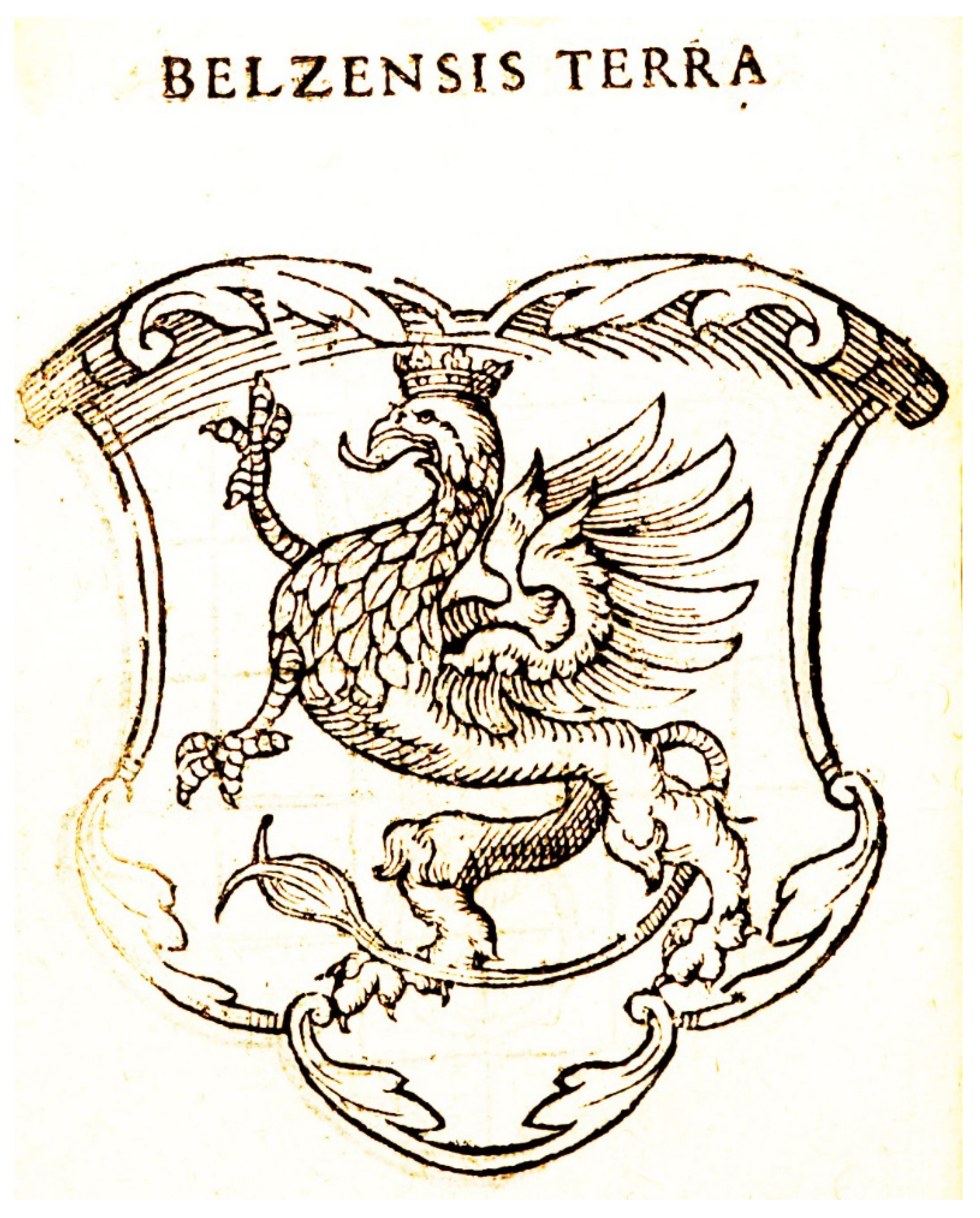


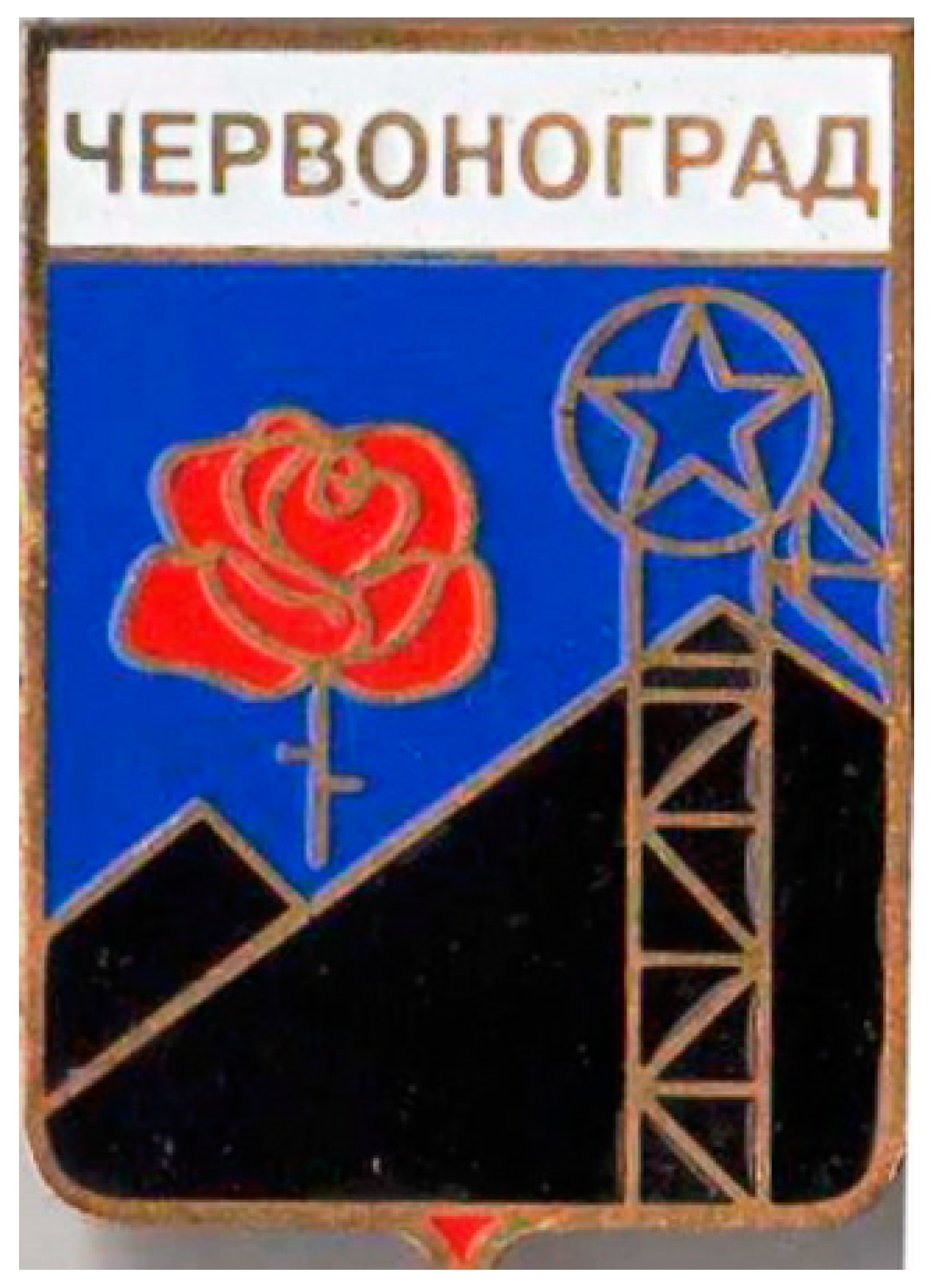
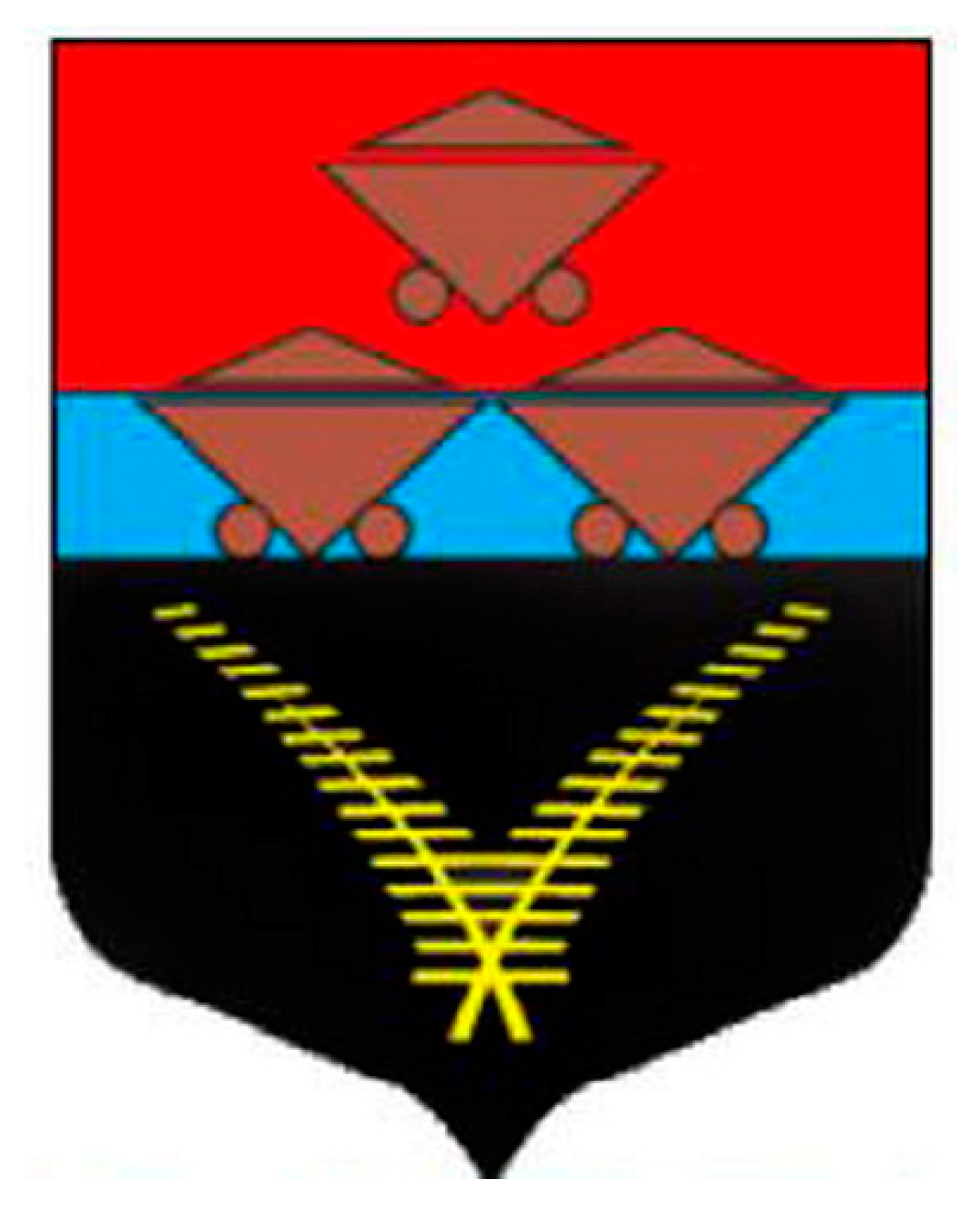


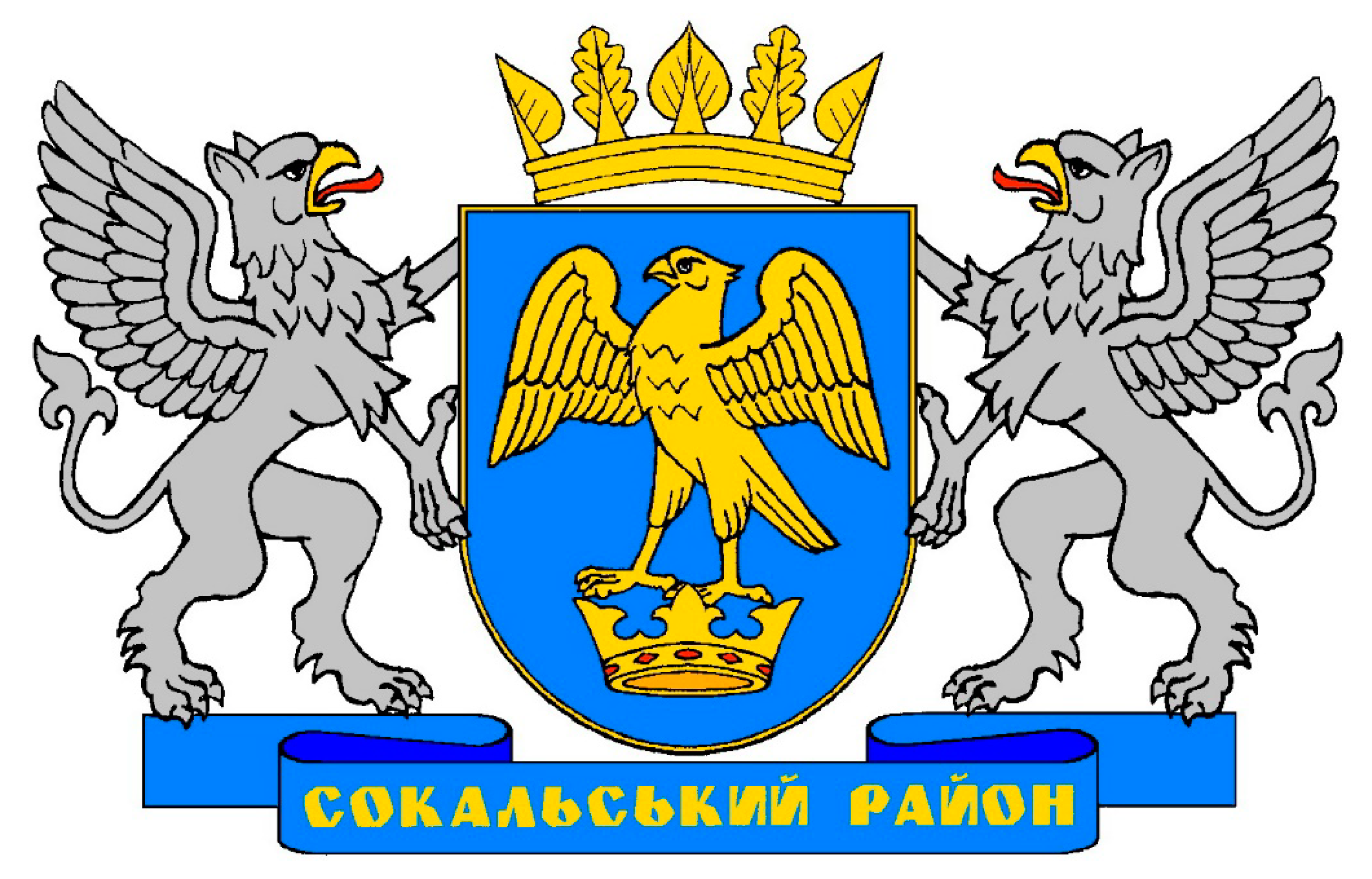

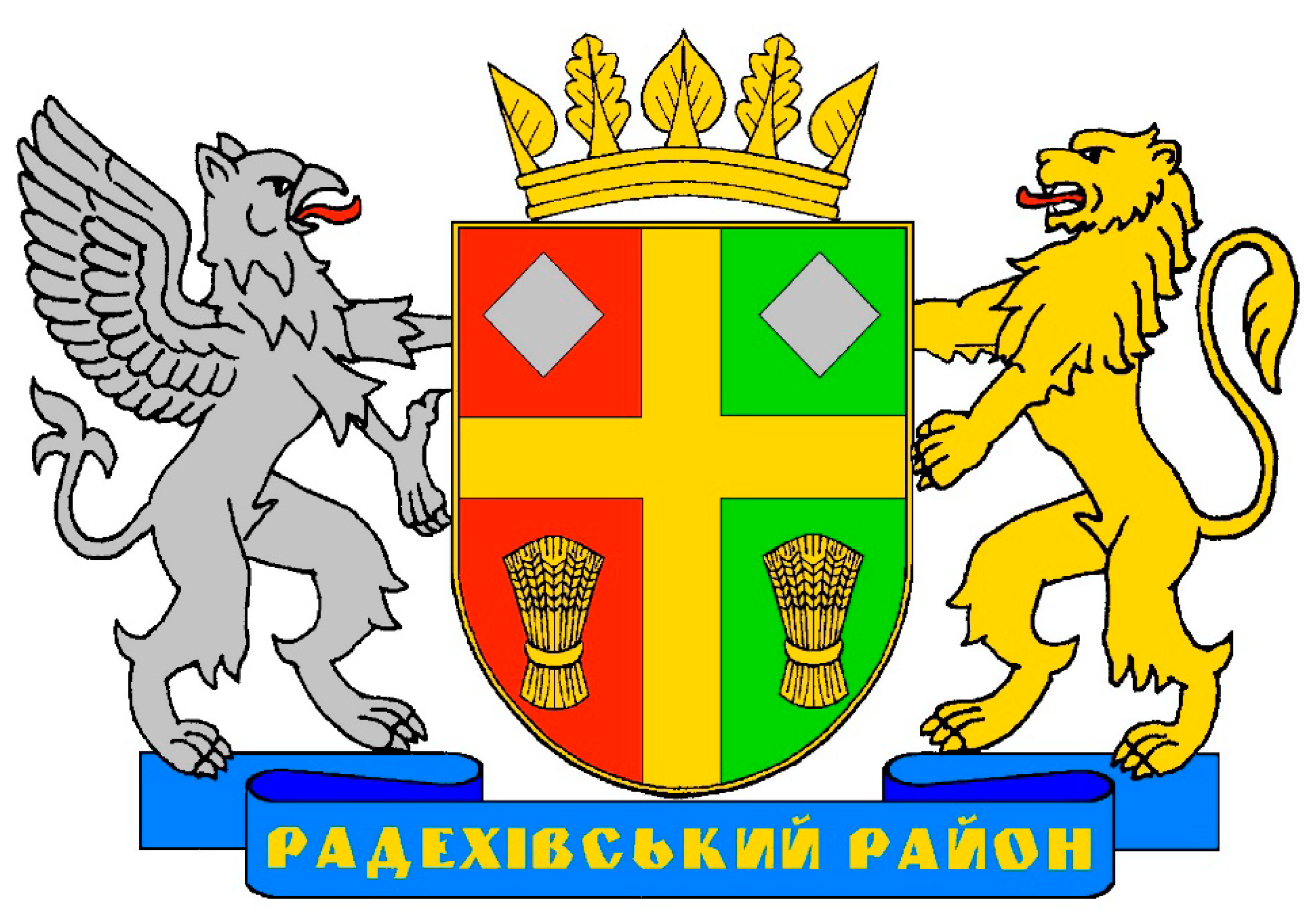

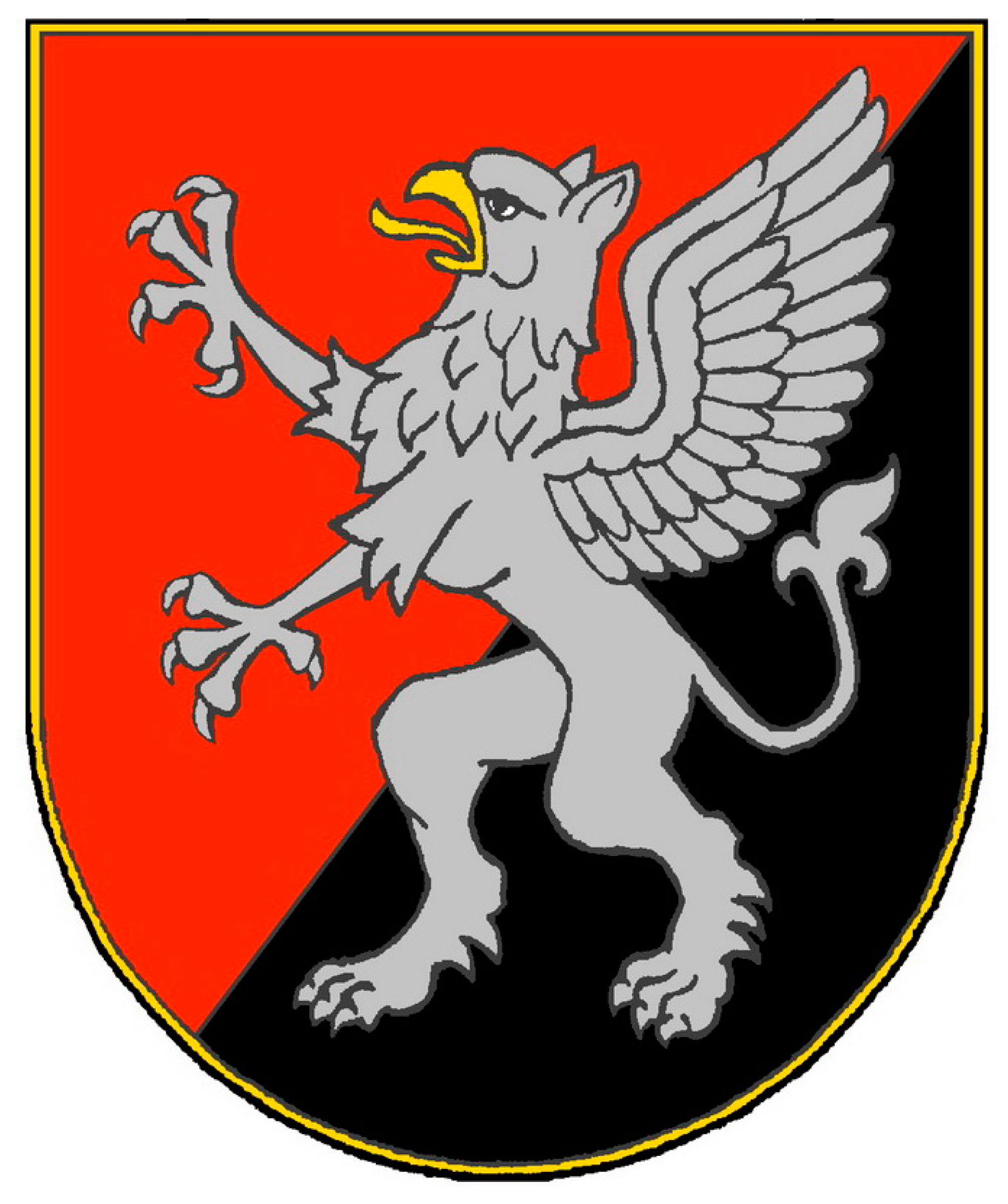
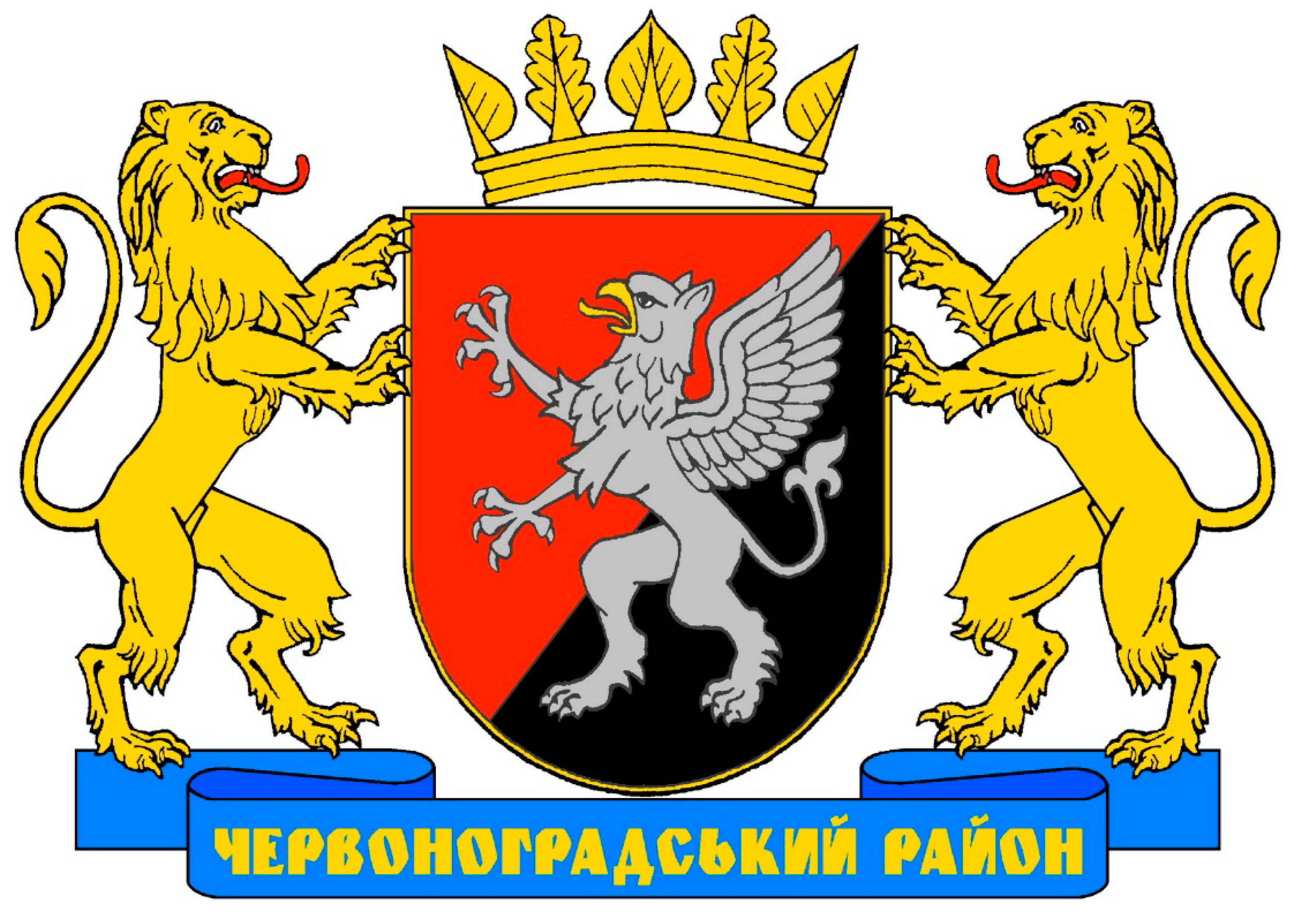

Publisher’s Note: MDPI stays neutral with regard to jurisdictional claims in published maps and institutional affiliations. |
© 2022 by the author. Licensee MDPI, Basel, Switzerland. This article is an open access article distributed under the terms and conditions of the Creative Commons Attribution (CC BY) license (https://creativecommons.org/licenses/by/4.0/).
Share and Cite
Grechylo, A. Symbols of the New Districts in Ukraine: Chervonohrad Raion as an Example. Genealogy 2022, 6, 6. https://doi.org/10.3390/genealogy6010006
Grechylo A. Symbols of the New Districts in Ukraine: Chervonohrad Raion as an Example. Genealogy. 2022; 6(1):6. https://doi.org/10.3390/genealogy6010006
Chicago/Turabian StyleGrechylo, Andriy. 2022. "Symbols of the New Districts in Ukraine: Chervonohrad Raion as an Example" Genealogy 6, no. 1: 6. https://doi.org/10.3390/genealogy6010006
APA StyleGrechylo, A. (2022). Symbols of the New Districts in Ukraine: Chervonohrad Raion as an Example. Genealogy, 6(1), 6. https://doi.org/10.3390/genealogy6010006




